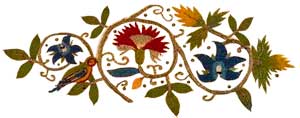Numerous posts over the years have covered aspects of gender fluidity: ‘Elizabethan Masquerade’, ‘Androgyny in Male Attire’, ‘Love Between Males on the Elizabethan Stage’, ‘The Roaring Girl’, and four posts on boy actors and sex. Now preparing a Zoom course on gender fluidity, I’m approaching the topic slightly differently. Indeed, I changed the title of the post ‘Homosexuality on the Elizabethan Stage’ to ‘Love Between Males’ to be more historically accurate.

The course description explains why:
‘A strict delineation of gender and sexuality did not pertain in late sixteenth-early seventeenth century England. Portraits show men in ‘effeminate’ dress, and Moll Frith, the Roaring Girl, went about in male clothing. Onstage, female roles were played by boys and young men, layering audience responses. Cultural and Biblical dictates rested on a heterosexual model, but the words ‘heterosexual’ and ‘homosexual’ did not exist in English until 1892, neither as adjectives or nouns. Not until Oscar Wilde’s notorious trials in 1895 did the identity ‘homosexual’ gain popular use.’
Few identified themselves by their sexuality well into the twentieth century. Of course, it was dangerous and illegal both in the U.S. and U.K. Not until 1967 did England decriminalize homosexuality, somewhat later in Scotland. Notably, in 2017, Great Britain pardoned 50,000 men prosecuted for homosexuality, including Oscar Wilde. In the U.S. states had varying statues, but it took decades before sexual identity became a point of pride.
Perhaps Alfred Kinsey and his research team helped pave the way with his six-point table of responses to his interviews and surveys relating to sexuality in his studies, Sexual Behavior in the Human Male, 1948, and Sexual Behavior in the Human Female, 1953. The Kinsey scale ranges from 0 for those who solely had desires for or sexual experiences with the opposite sex to 6 for those who had exclusively same sex desires or experiences, and 1–5 for those who had varying levels of desire or experiences with both sexes, including “incidental” or “occasional” desire for sexual activity with the same sex. It did not reference whether they ‘identified’ as heterosexual, bisexual, or homosexual.
Such a scale would seem bizarre in Elizabethan and early Stuart England. Shakespeare was the Soul of the Age, as Ben Jonson wrote in his memory—and, as it’s turned out, ever since. His dramas, words, psychology, and observations continue to touch each generation anew. However, the Renaissance mind was was definitely different from our own, at least in the matter of sexual categorization. It simply did not exist.
My upcoming novel, Bedtrick, depicts a relationship between two women in Shakespeare’s England. One, Alexander (Sander) Cooke mentioned elsewhere in this blog was born female. She convincingly disguised herself as male so as to perform on stage, where female roles were played by boys and young men. Early on, the publisher asked me if these two were homosexual. A resounding no! Even if the two were only attracted to women, which in fact neither is, the word is irrelevant to the times.
The woman I refer in my blog and novels who blatantly flaunted the rules against cross-dressing is Moll Frith. In the early 17thcentury she was arrested as a thief and a bawd, but her own sexuality is not on record. Moll never married; beyond that we don’t know. Middleton and Dekker’s play in which Moll is the leading character, The Roaring Girl, is a sexual farce of sorts, but Moll is shown as chaste and uninterested in pursuing men. Whether she’s interested in women doesn’t concern the playwrights.
Early on, my blog related to my novel The Secret Player. However, I did refer to sources and plays that relate to my gender fluidity course. For example, some passages from ‘Boy Actors and Sex, 2’, slightly edited:
Elizabethan England enacted strict laws against sodomy, and other ‘perverted’ behaviors were condemned, as the writings of the Puritan John Rainoldes and others illustrate. In his Th’ Overthrow of Stage Players Rainoldes’ hysteria is aimed at the mere existence boy players and theatre itself to ta pathological degree..
However, as Bruce Smith and Alan Bray have pointed out separately, the apparent virulent homophobia of Elizabethan law (death for sodomy, which could be so broadly defined as to include witchcraft, heresy, and treason) is not comprehensive proof of the social attitude towards homoeroticism in that era. Although preachers inveighed against sodomy, sexual contact between males was more widespread than the law suggests.
Realities of life in England included apprentices. laborers and guests at inns sleeping several to the bed, males sharing schooling, and soldiering in close quarters. In Shakespeare’s day, ideas of sexuality were fluid; one might participate in homosexual acts without being identified by them. Only when, for example, a marriage was barren because of the husband’s inclinations elsewhere or for rape of a young man were the laws were invoked. Court records recount amazingly few prosecutions.
As Kinsey points out, people’s sexual orientation can change over the years. This is born up in early modern England history, where men involved with other men either already were married or in general, married later. A whole course-worth of topics and people to cover, but the basic point has been made for now.
Image: Henry Wriothesley, later Earl of Southampton
